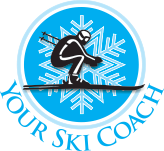Glossary
Cross Over
Cross Under
Cross Through
Glossary
Cross Over
Cross Under
Cross Through

A manner of transitioning from one turn to the next, in which the Center of Mass rises as it passes from one side of the skis to the other. It's happens when the inside leg of the current turn is extended before reaching edge angle neutral during the transition. It requires slightly more effort than cross through does to perform, because extending before edge angle neutral requires a battle with gravity. The benefits of cross over are found in the early fore balance state it produces for the new turn, and the relaxation period it provides while the legs are momentarily extended under light load. Cross over can be done in various amounts, from no extension at all, which produces only a minor amount of cross over, to full extension, which results in a maximum rising of the Center of Mass.















A manner of transitioning from turn to turn, in which the Center of Mass takes a straight line path of travel one side of the skis to the other, remaining always the same height above the snow. It does not rise, as it does during Cross Over. To keep the Center of Mass from rising as it crosses over the skis, both legs must be flexed strongly. If the legs are not flexed, the Center of Mass will rise as it pendulums across the skis. Cross through is a very quick way to transition into a new turn, because the Center of Mass travels such a direct route across the skis. The liability of this crossing type comes from the fact that fore balance comes later in the turn cycle than it does during Cross Over. The hips enter the new turn aft of the feet, and the new outside leg must be quickly extended to establish fore balance on a strong outside leg in the top half of the new turn.
Cross Through
Cross Under
A manner of transitioning into a new turn, in which the skis cross rapidly under a stable upper body. This is in contrast to Cross Over, and Cross Through, where the body crosses into a new turn, over the top of stable feet and skis. It's done by adding a bit of extra edge angle at the end of a turn, without adjusting the lateral location of your Center of Mass. A state of imbalance is created which causes the skis to cut aggressively under the body, and rebound out to the opposite side, as the body continues down the falline. Cross Under is best combined with a pivot. The pivot quickly reestablishes fore/aft balance for the initiation of the new turn.
Cross Over